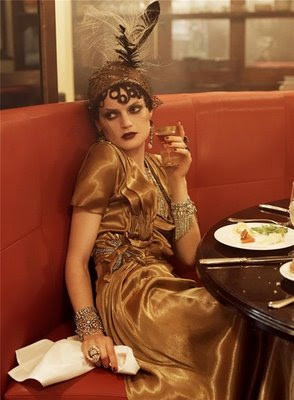 |
| Symmetrical balance. |
Symmetrical balance is easily found in many forms of architecture, landscaping, and furnishing layouts; it creates a state of equilibrium and brings a sense of formality to a space. Symmetrical design can be comforting, but it can also quickly become boring due to its predictability.
 |
| Asymmetrical balance. |
Asymmetrical balance is achieved when disimilar objects carrying different visual weights look balanced due to the use of similar elements (texture, color, shape) which creates order. Asymmetrical balance is often more informal and interesting to look at, as well. Above, the mantel, though different objects are placed on either side, a sense of balance is achieved through similar colors and the distribution of visual weight. One way that balance is achieved in the bottom right photo is through the placement of the cork board. The only example of an unsuccessful attempt at asymmetrical balance is the statue in the top middle. Yellow is a much lighter hue than the deep pink and blue; not only is it the only circle on the right side, but the light color is unable to balance out the two heavier colors on the opposite side.
 |
| Radial balance. |
Radial balance occurs when a pattern is arranged around a point. It conveys movement and can often be found in fabric, tiling, and landscapes. Radial balance also creates focal points for the eye which gravitates towards the center points of the design.
 |
Emphasis + Dominance.
|
Emphasis is created through focal points of visual interest for the viewer. They are often created through a contrasting scale, color, texture, shape, lighting, etc. Moving diagonally downwards from the top left to the bottom right, color is used to create emphasis against mostly neutral or bleak environments. Lighting is also used to create focal points, both with the two pictured chandeliers as well as the spot-lighting which highlights each pair of shoes on the shelf. Emphasis is also created through the use of a colored border and a contrasting wallpaper, which differs from the rest of the blank walls.
 |
| Repetition through the use of long verticals of the rope and hanging lights. The material of the rope itself also repetes throughout the room. |
 |
| Repeating shapes, forms, and planes. |
 |
| Repeating shapes, materials, and colors. |
Repetition and rhythm are created through repeating elements such as texture, color, shape, etc. These two principles create unity and stability through a space and can also be used to cause the eye to move throughout a space through connecting elements. Repetition often create a sense of unity in a space as well.
 |
Movement.
|
Movement causes the eye to move throughout a space and often leads to a focal point. Movement can be created through the use of light such as the lights in the top middle photo, the string lights, and the back-lit counter of Yoforia, which leads the costumer to the frozen yogurt dispensers. Movement can also be created in the use of diagonal or vertical lines and repeating elements, which can be seen throughout the rest of the photographs. There are diagonals in the stepping stones, the red industrial metal (top right) and the tables (top left) and vertical lines of the wood paneling draw the eye down the overhang. The wood, stone, and metal elements of these photographs, also create a continuous line for the eye to follow.
 |
Proportion + Scale.
|
The above photographs exemplify proportion through their use of life or a larger-than-life-size scale. The two outdoor sculptures are gigantic; the woman is about as tall as the entrance to the museum and the other is closer to 1.5-2 stories high. Though they are large, they still work well in proportion to the outdoor space, as opposed to an interior, in which they could have looked to crowded. The small white table (top right) at first glance seems too small to be functional, but in comparison to the short chair, which it was paired with, would seem to be an appropriate height. The hot air balloon, though not to scale of an actual balloon, is huge compared to the small bookshop it is in -- creating an area of emphasis. An example of an unsuccessful use of proportion is the clock tower in downtown Athens. The clock is proportional to the outdoor space, but not proportional to itself; the fat head of the clock is too large for the stand which is too thin.
 |
Unity + Harmony.
|
Unity and harmony is created through the use of similar or reoccurring elements throughout a space which gives it a cohesive look or sense of oneness. In the top row, similar colors and materials create a sense of unity. (Top left: grays, industrial metal, concrete. Top right: gray, white, ceramic/plastic.) The yogurt dispensers at Yoforia all contain similar backlighting and bright colors. The repeating forms and material of the long tables in the restaurant create a sense of unity through repetition. The bottom two photographs create unity through repeating materials. (Left: leather, wood, and fur. Right: same tone of wood.)
 |
Variety.
|
Variety is created through the use of different elements to hold the attention of a viewer. This can be through different textures, colors, or surface materials. All of the above photographs show variety through their use of an assortment of textures and materials, such as stucco walls, brick, metal, wood, plastic, fur, etc. The 2nd and 4th photographs from the left of the bottom collage also show variety through the use of contrasting organic and horizontal/vertical lines. One must be careful with variety as well because it can become visually overwhelming for the viewer if there are not repeating elements which create balance and unity throughout the space.

















































